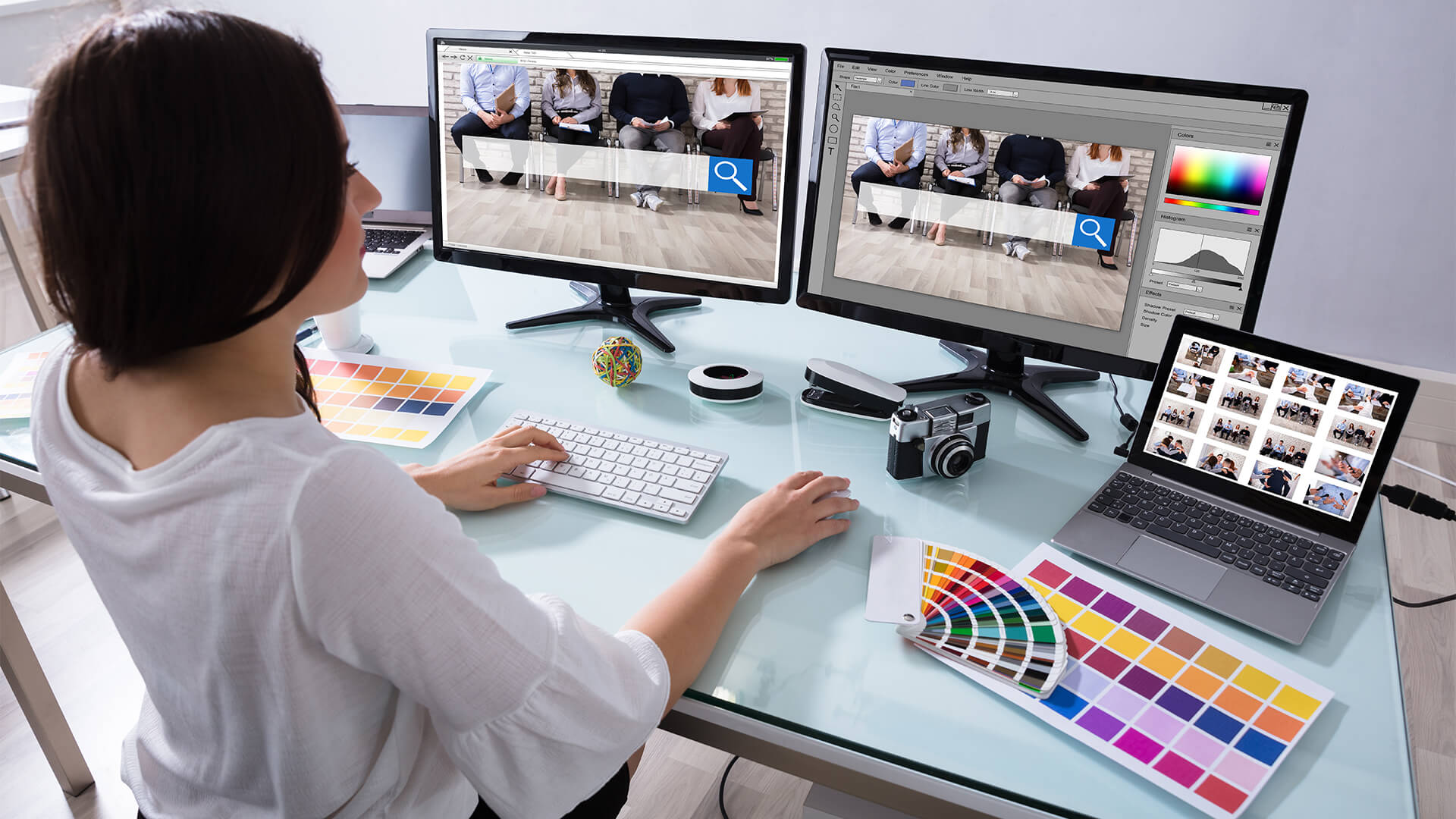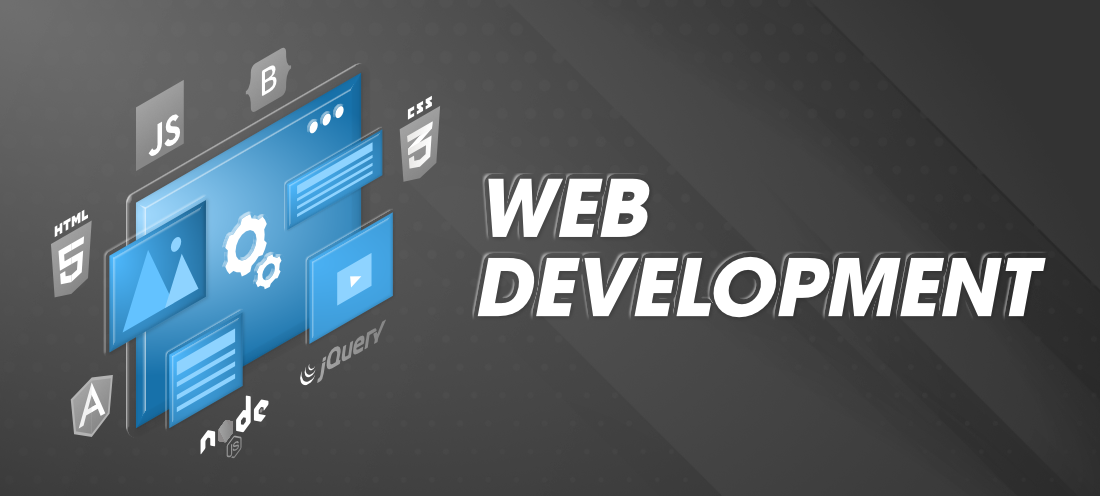All Categories
Featured
Table of Contents
- – Minneapolis Web Design - 100+ Five Star Review...
- – Why Good Web Design Is Important, And Why You...
- – Web Developers And Digital Designers - Bureau...
- – Why Good Web Design Is Important, And Why You...
- – Boxcar Studio - Wordpress & Drupal Web Design...
- – Modern Website Designs - Best Web Page Design...
- – Web Design And Development - Invision Tips a...
- – Why Is Web Design Important? - 6 Reasons To ...
- – Web Design Services By Freelance Website Des...
- – Otc Web Design Girdwood, Alaska - Web Design...
- – Why Good Web Design Is Important, And Why Yo...
Minneapolis Web Design - 100+ Five Star Reviews - Seo ... Tips and Tricks:
Quick summary Usability and the energy, not the visual design, determine the success or failure of a site. Considering that the visitor of the page is the only individual who clicks the mouse and therefore decides whatever, user-centric style has actually developed as a standard technique for successful and profit-oriented website design - web design frederick md.
and the energy, not the visual design, determine the success or failure of a website. Since the visitor of the page is the only person who clicks the mouse and for that reason decides everything, user-centric style has ended up being a basic approach for effective and profit-oriented website design. After all, if users can't use a function, it may too not exist.
g. where the search box need to be put) as it has already been carried out in a variety of short articles; rather we focus on the techniques which, utilized appropriately, can lead to more advanced design choices and simplify the process of perceiving presented information. Please notice that you may be interested in the usability-related posts we've published before: Principles Of Good Site Style And Reliable Website Design Guidelines, In order to utilize the concepts properly we initially require to understand how users communicate with sites, how they think and what are the fundamental patterns of users' habits.
Why Good Web Design Is Important, And Why You Need It Tips and Tricks:
Visitors glimpse at each new page, scan a few of the text, and click on the very first link that captures their interest or slightly resembles the important things they're looking for. In fact, there are big parts of the page they do not even take a look at. A lot of users look for something intriguing (or helpful) and clickable; as quickly as some appealing candidates are discovered, users click.
If a page offers users with top quality content, they are ready to jeopardize the material with advertisements and the style of the website. This is the reason why not-that-well-designed websites with top quality material acquire a lot of traffic over years. Material is more crucial than the design which supports it.

Users do not check out, they scan. Notification how "hot" locations abrupt in the middle of sentences. This is typical for the scanning process. Really easy concept: If a site isn't able to satisfy users' expectations, then designer stopped working to get his job done effectively and the company loses money. The higher is the cognitive load and the less intuitive is the navigation, the more prepared are users to leave the site and search for options.
Web Developers And Digital Designers - Bureau Of Labor ... Tips and Tricks:
Neither do they scan website in a linear style, going sequentially from one website area to another one. Instead users satisfice; they choose the very first sensible choice. As quickly as they discover a link that appears like it may cause the objective, there is an excellent chance that it will be immediately clicked.
It doesn't matter to us if we understand how things work, as long as we can utilize them. If your audience is going to act like you're developing billboard, then style great signboards." Users wish to be able to control their internet browser and rely on the consistent data discussion throughout the website.
If the navigation and site architecture aren't intuitive, the number of enigma grows and makes it harder for users to understand how the system works and how to receive from point A to point B. A clear structure, moderate visual ideas and easily recognizable links can assist users to find their course to their goal.
Why Good Web Design Is Important, And Why You Need It Tips and Tricks:

Because users tend to check out sites according to the "F"-pattern, these 3 declarations would be the very first components users will see on the page once it is filled. The style itself is easy and intuitive, to understand what the page is about the user requires to browse for the answer.
When you've attained this, you can interact why the system works and how users can take advantage of it. Individuals will not use your web website if they can't find their way around it. 2. Don't Waste Users' Perseverance, In every job when you are going to use your visitors some service or tool, try to keep your user requirements very little.
First-time visitors want to, not filling long web forms for an account they might never ever utilize in the future. Let users check out the site and find your services without forcing them into sharing private information. It's not sensible to require users to get in an email address to check the function.
Boxcar Studio - Wordpress & Drupal Web Design ... - Ann Arbor Tips and Tricks:
Stikkit is a perfect example for an easy to use service which requires practically absolutely nothing from the visitor which is unobtrusive and comforting. Which's what you want your users to feel on your website. Apparently, Termite needs more. Nevertheless the registration can be performed in less than 30 seconds as the type has horizontal orientation, the user does not even need to scroll the page.
A user registration alone is enough of an impediment to user navigation to minimize inbound traffic. 3. Handle To Focus Users' Attention, As sites supply both fixed and vibrant content, some elements of the interface bring in attention more than others do. Obviously, images are more eye-catching than the text simply as the sentences marked as vibrant are more appealing than plain text.
Focusing users' attention to particular areas of the website with a moderate usage of visual aspects can help your visitors to receive from point A to point B without thinking of how it really is supposed to be done. The less concern marks visitors have, the they have and the more trust they can establish towards the company the website represents.
Modern Website Designs - Best Web Page Designers Tips and Tricks:
Strive For Feature Exposure, Modern web designs are usually slammed due to their method of assisting users with aesthetically appealing 1-2-3-done-steps, big buttons with visual results and so on. From the design viewpoint these components actually aren't a bad thing.
The website has 9 primary navigation alternatives which are noticeable at the first glimpse. What matters is that the content is well-understood and visitors feel comfy with the method they connect with the system.
Instead a rate: just what visitors are looking for. An optimum solution for effective writing is touse short and concise expressions (come to the point as rapidly as possible), usage scannable layout (categorize the material, utilize multiple heading levels, use visual aspects and bulleted lists which break the flow of uniform text blocks), use plain and unbiased language (a promotion does not require to sound like advertisement; give your users some sensible and objective factor why they ought to use your service or stay on your site)6.
Web Design And Development - Invision Tips and Tricks:
Users are hardly ever on a site to take pleasure in the style; furthermore, most of the times they are searching for the details regardless of the design - web design frederick md. Pursue simplicity instead of complexity. From the visitors' perspective, the very best website design is a pure text, without any ads or more material obstructs matching exactly the question visitors used or the material they've been looking for.
Finch clearly provides the information about the website and gives visitors an option of alternatives without overcrowding them with unnecessary material. 7. Don't Hesitate Of The White Space, In fact it's truly tough to overestimate the significance of white area. Not only does it help to for the visitors, however it makes it possible to perceive the info presented on the screen.
Complex structures are more difficult to read, scan, examine and deal with. If you have the choice between separating two design sectors by a noticeable line or by some whitespace, it's normally much better to use the whitespace service. (Simon's Law): the better you handle to offer users with a sense of visual hierarchy, the much easier your content will be to view.
Why Is Web Design Important? - 6 Reasons To Invest In Site ... Tips and Tricks:
The very same conventions and rules need to be used to all elements.: do the most with the least amount of hints and visual components. 4 significant indicate be considered: simplicity, clearness, diversity, and emphasis. Simpleness consists of only the components that are most essential for communication. Clearness: all elements ought to be developed so their meaning is not unclear.
Conventions Are Our Buddies, Conventional design of site elements doesn't result in a boring web website. It would be an usability headache if all websites had various visual discussion of RSS-feeds.
comprehend what they're getting out of a site navigation, text structure, search positioning etc. A common example from use sessions is to equate the page in Japanese (assuming your web users do not understand Japanese, e. g. with Babelfish) and provide your functionality testers with a job to discover something in the page of different language.
Web Design Services By Freelance Website Designers - Fiverr Tips and Tricks:
Steve Krug suggests that it's much better to, however make the most of conventions when you don't. 10. Test Early, Test Often, This so-called TETO-principle must be used to every website design project as usability tests often provide into substantial problems and problems related to a provided layout. Test not far too late, not too little and not for the incorrect factors.
Some crucial points to remember: according to Steve Krug, and testing one user early in the project is better than screening 50 near the end. Accoring to Boehm's first law, mistakes are most frequent during requirements and style activities and are the more expensive the later on they are removed.
That indicates that you create something, test it, fix it and then evaluate it again. There might be issues which have not been discovered during the very first round as users were practically blocked by other problems. use tests. Either you'll be pointed to the problems you have or you'll be indicated the absence of significant style flaws which remains in both cases a helpful insight for your project.
Otc Web Design Girdwood, Alaska - Web Design & Google ... Tips and Tricks:

This holds for designers too. After you have actually worked on a website for couple of weeks, you can't observe it from a fresh perspective any longer. You understand how it is built and for that reason you understand precisely how it works you have the wisdom independent testers and visitors of your site wouldn't have.
It can be linked to other locations such as graphic style, user experience, and multimedia arts, however is more aptly seen from a technological perspective. It has ended up being a big part of people's everyday lives. It is difficult to think of the Web without animated graphics, various styles of typography, background, videos and music.

Throughout 1991 to 1993 the Internet was born. Text-only pages might be seen utilizing a basic line-mode internet browser. In 1993 Marc Andreessen and Eric Bina, developed the Mosaic internet browser. At the time there were several browsers, nevertheless the majority of them were Unix-based and naturally text heavy. There had actually been no integrated approach to graphic design elements such as images or noises.
Why Good Web Design Is Important, And Why You Need It Tips and Tricks:
The W3C was produced in October 1994 to "lead the World Wide Web to its complete potential by developing typical protocols that promote its evolution and guarantee its interoperability." This prevented any one company from monopolizing a propriety internet browser and programming language, which could have altered the impact of the Web as a whole.
As this has actually taken place the innovation of the web has actually also moved on. There have also been considerable modifications in the method people use and access the web, and this has actually changed how sites are designed. Considering that the end of the browsers wars [] new internet browsers have actually been launched. Much of these are open source indicating that they tend to have much faster advancement and are more encouraging of brand-new requirements.
Learn more about Lovell Media Group LLC or TrainACETable of Contents
- – Minneapolis Web Design - 100+ Five Star Review...
- – Why Good Web Design Is Important, And Why You...
- – Web Developers And Digital Designers - Bureau...
- – Why Good Web Design Is Important, And Why You...
- – Boxcar Studio - Wordpress & Drupal Web Design...
- – Modern Website Designs - Best Web Page Design...
- – Web Design And Development - Invision Tips a...
- – Why Is Web Design Important? - 6 Reasons To ...
- – Web Design Services By Freelance Website Des...
- – Otc Web Design Girdwood, Alaska - Web Design...
- – Why Good Web Design Is Important, And Why Yo...
Latest Posts
Web Design:
Web Design - Wikipedia Tips and Tricks:
The Top Ecommerce, Website Design ... - Seattle Tips and Tricks:
More
Latest Posts
Web Design:
Web Design - Wikipedia Tips and Tricks:
The Top Ecommerce, Website Design ... - Seattle Tips and Tricks: